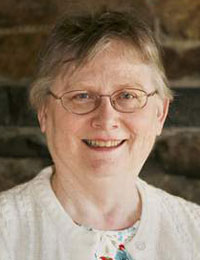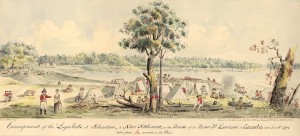 As I have been making my way through my grandfather’s box of family papers, one letter – written by my great-great-grandmother Catharine Elizabeth (White) Steward[1] to her son, my great-grandfather[2] – has proved elusive. It was, I remembered, written in 1864, and provided the only reference I can recall to the period of my great-great-aunt Harriet Le Roy Steward’s engagement to her future husband.[3] The letter turned up, finally, in a collection of newspaper articles on the Steward family of Goshen, in the last bundle of the last few envelopes in John Steward’s iron box. Continue reading “My dear Cam”
As I have been making my way through my grandfather’s box of family papers, one letter – written by my great-great-grandmother Catharine Elizabeth (White) Steward[1] to her son, my great-grandfather[2] – has proved elusive. It was, I remembered, written in 1864, and provided the only reference I can recall to the period of my great-great-aunt Harriet Le Roy Steward’s engagement to her future husband.[3] The letter turned up, finally, in a collection of newspaper articles on the Steward family of Goshen, in the last bundle of the last few envelopes in John Steward’s iron box. Continue reading “My dear Cam”
Monthly Archives: September 2015
Witches and traitors and saints, oh, my!

I have, on most occasions, an irreverent attitude toward my family history. I think the critical details of names, dates, and places are the foundation of any genealogical research, but beyond that it seems that those details can become ends in themselves. After years of traditional genealogical research, I try not to be caught up in the web of endless searching for this date, or that place; rather, I try to focus on the stories in the mêlée of my heritage. I’m seldom disappointed by the individual day-to-day lives; disappointment comes with the lack of information about them, even if it’s just an unnamed couple in a tintype. Continue reading Witches and traitors and saints, oh, my!
A second toe in the web
 When I started my experiment of creating a web page about seven months ago, I advised everyone not to follow my advice and not to expect quick results. Good thing, because as of this writing, I have just managed to publish a website with one page!
When I started my experiment of creating a web page about seven months ago, I advised everyone not to follow my advice and not to expect quick results. Good thing, because as of this writing, I have just managed to publish a website with one page!
Back in February I found the procedures and information that I needed to wend through in order to create a web page far more complex than it had been the “old days,” when I had successfully created a website with Network Solutions, so I let the project linger while attending to more urgent and/or fun things. Continue reading A second toe in the web
Family history for sale

For the second time in my life, I have the nagging sensation of not being at all in the market for a home in the middle of Virginia – but wishing that I were. Bear Castle, dilapidated and sad-looking (“livable but needs work”), is for sale (“Sold AS IS”).[1] Its interior cluttered with the incongruous collections of more than two and a half centuries’ habitation, its kitchen startlingly reminiscent of a mid-twentieth-century diner, the thousand-acre estate it once governed has been reduced to just over three acres that realtors suggest might be subdivided further still. Continue reading Family history for sale
Loyalist ancestors

Mabel Winters, my great-grandmother, left Yarmouth County, Nova Scotia, when she was about eighteen or nineteen years old. She arrived in the United States about 1900, and first lived with her older brother George in Norton, Bristol County, Massachusetts. I have heard many wonderful stories about Mabel, and I wanted to learn everything that I could about her. As I began to research her life in Nova Scotia, I discovered that she was descended from several Loyalist families. Continue reading Loyalist ancestors
Vive la Reine!

Later on today, Queen Elizabeth II’s reign will surpass the reign of her great-great-grandmother Queen Victoria in length. While the British throne has known many monarchs of short duration – the queen’s uncle, King Edward VIII (1936), comes readily to mind – it is interesting to note that the House of Hanover/Saxe-Coburg-Gotha/Windsor has produced a king and two queens who ruled for more than fifty years each: George III (1760–1820, 59 years and 96 days), Victoria (1837–1901, 63 years and 216 days), and Elizabeth II (1952–, 63 years and 215 days … and counting).[1] Continue reading Vive la Reine!
Making progress by breaking with tradition

As an avid genealogical researcher, I am keenly aware of the role that tradition plays in history. In all cultures, each new generation largely expects to follow traditions set by their predecessors, often without much thought as to why. Asking why is important. Challenging tradition brings progress. Haven’t the advances in civil rights over the past 100 years come largely from challenging tradition?
Recently I saw a discussion on Facebook on the tradition of a woman taking her husband’s last name upon marriage. A friend who had chosen to keep her birth name commented that she didn’t see any reason to change her name; she thought the tradition was outdated and paternalistic. I agreed, but I couldn’t help but notice that while she had kept her surname, both her son and daughter had their father’s last name. This has always been a tradition with which I had been uneasy, but until now I hadn’t been able to come up with a better alternative. Continue reading Making progress by breaking with tradition
The sweet satisfaction of labor
 At this time of year, my family and I have two special reasons to contemplate the memory of my maternal grandfather, Arthur David (born Achille Alessio Riccardo) Belforti (1902-1996). First of all, his birthday is September 3 – a date that never passes unnoticed in my family. Second, there is no person we associate more with Labor Day than Grampy, not just because he worked so exceptionally hard and long, but because of the immense value he placed on work and the personal satisfaction and pride it brought him. Continue reading The sweet satisfaction of labor
At this time of year, my family and I have two special reasons to contemplate the memory of my maternal grandfather, Arthur David (born Achille Alessio Riccardo) Belforti (1902-1996). First of all, his birthday is September 3 – a date that never passes unnoticed in my family. Second, there is no person we associate more with Labor Day than Grampy, not just because he worked so exceptionally hard and long, but because of the immense value he placed on work and the personal satisfaction and pride it brought him. Continue reading The sweet satisfaction of labor
17th-century occupations in Massachusetts
 In his monumental work The Pioneers of Massachusetts, Charles Henry Pope summarized the occupations and trades of 1,725 of the 6,000 “pioneers” for whom the information was available. These 6,000 individuals were identified “in the journals and lists of the colonies, towns, churches and counties of the period 1620-1650, inclusive, as well as those perpetuated in the passenger-lists of that time which have survived to our day.” (Pope’s “day” was 1900, 115 years ago.) Continue reading 17th-century occupations in Massachusetts
In his monumental work The Pioneers of Massachusetts, Charles Henry Pope summarized the occupations and trades of 1,725 of the 6,000 “pioneers” for whom the information was available. These 6,000 individuals were identified “in the journals and lists of the colonies, towns, churches and counties of the period 1620-1650, inclusive, as well as those perpetuated in the passenger-lists of that time which have survived to our day.” (Pope’s “day” was 1900, 115 years ago.) Continue reading 17th-century occupations in Massachusetts
The figure in the photograph
 Recently, while going through my family’s photos and albums, I laid out the various tintypes, cabinet cards, ambrotypes, albumen prints, and daguerreotypes on a long family tree chart drawn on paper and covering my dining table. I placed a tintype or daguerreotype next to each name. One cabinet card – of a pretty woman posing for her portrait, the hoop a faint outline supporting her skirt – crept into my hand, although I had no place to put it.
Recently, while going through my family’s photos and albums, I laid out the various tintypes, cabinet cards, ambrotypes, albumen prints, and daguerreotypes on a long family tree chart drawn on paper and covering my dining table. I placed a tintype or daguerreotype next to each name. One cabinet card – of a pretty woman posing for her portrait, the hoop a faint outline supporting her skirt – crept into my hand, although I had no place to put it.
I have no idea who she is. Continue reading The figure in the photograph